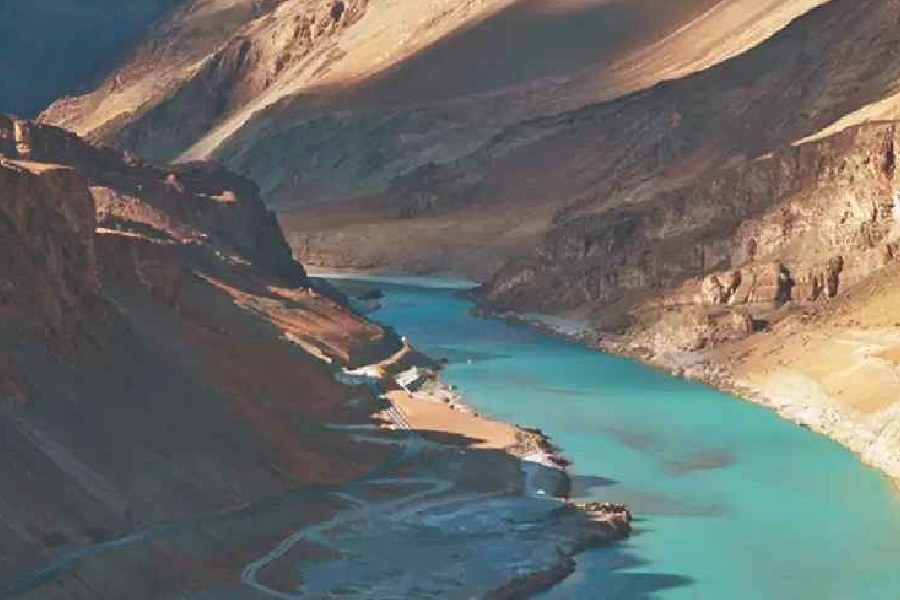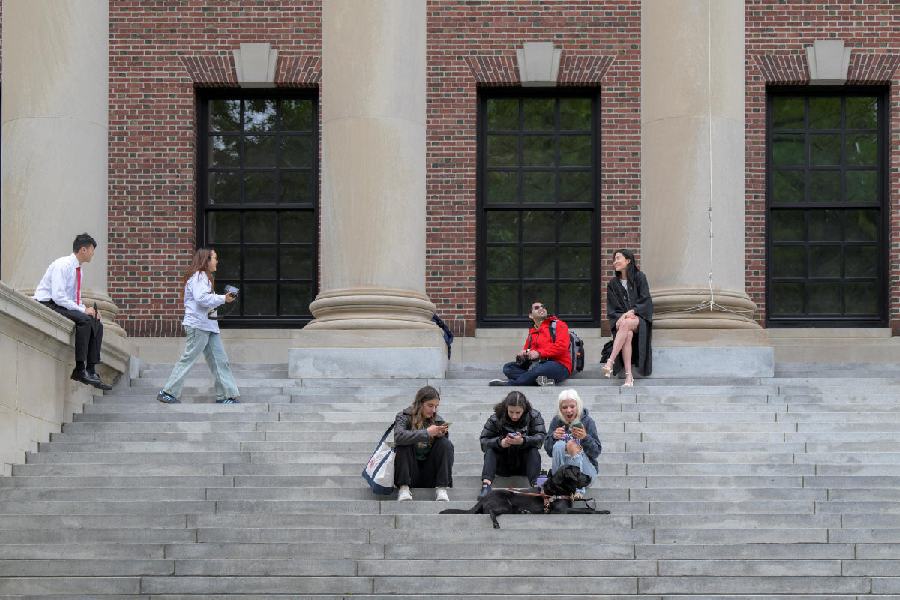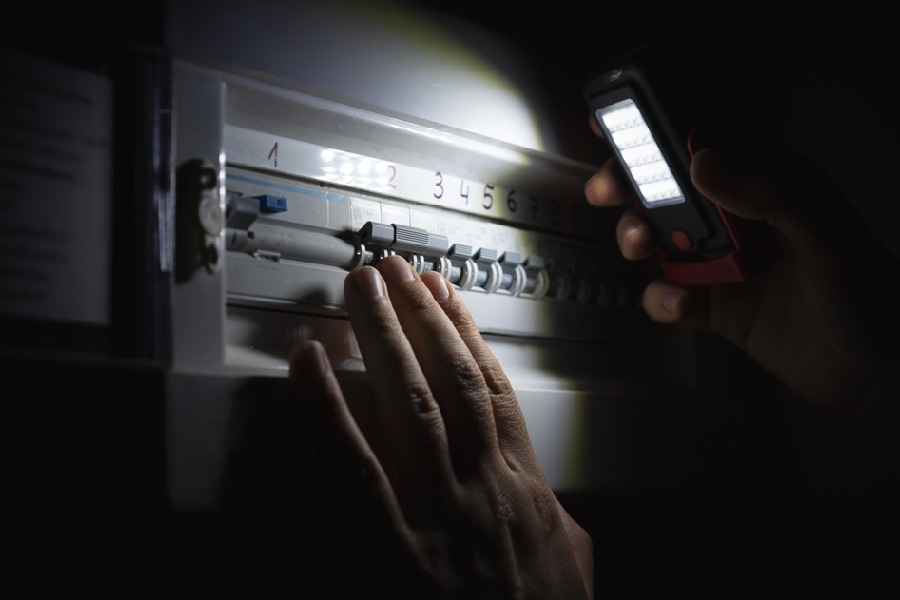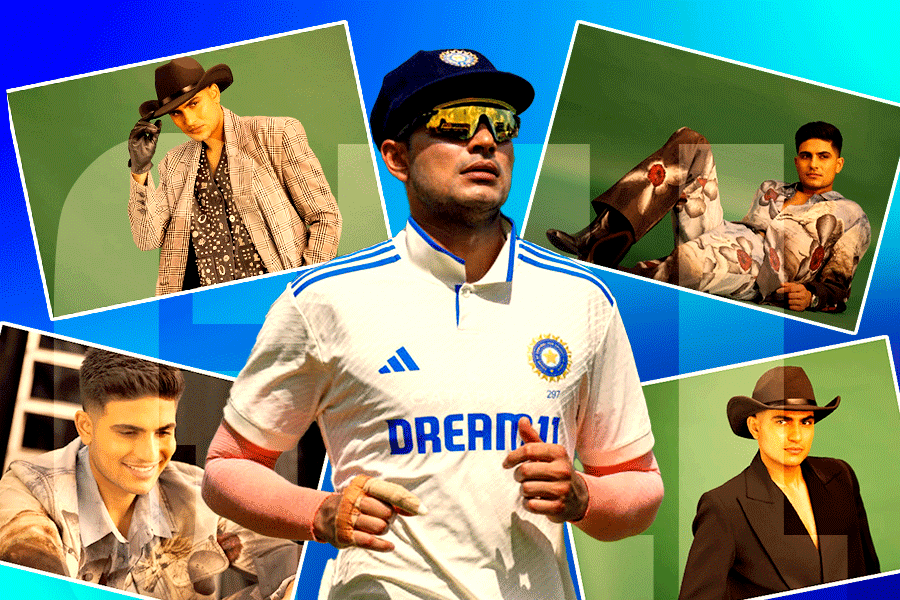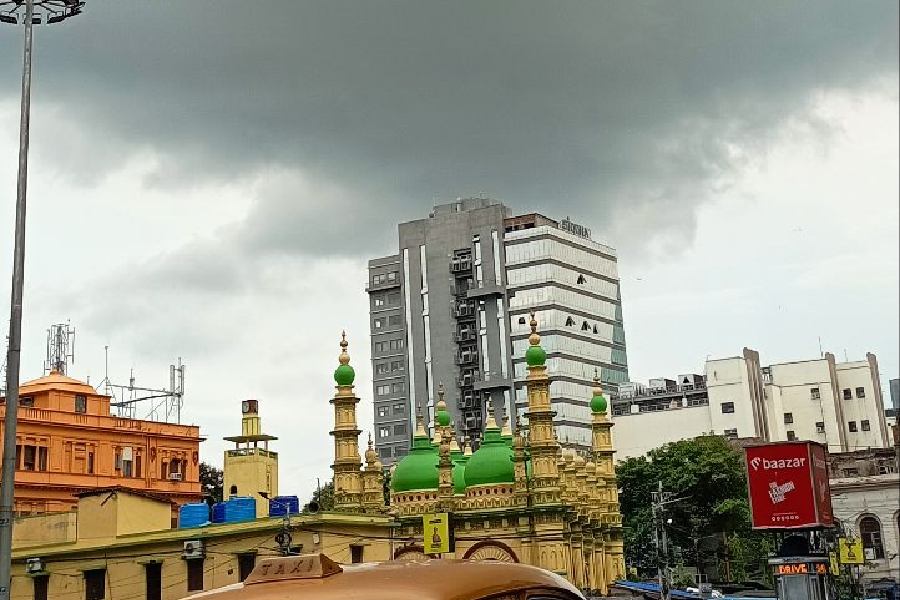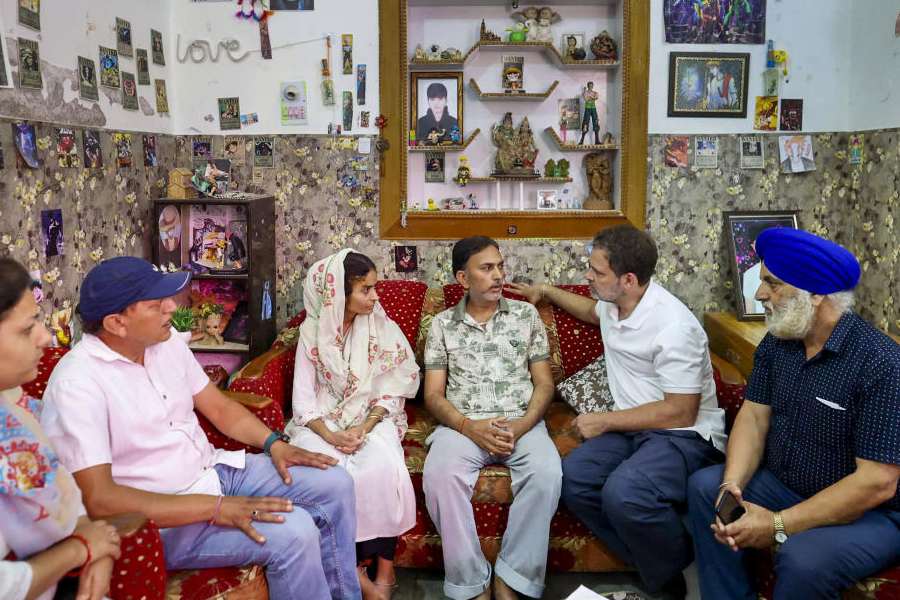 |
| A ritual for Kharchi Puja being performed at Puran Haveli near Agartala. Picture by Parthajit Datta |
Agartala, July 27: Kharchi Puja, an indigenous religious festival at the temple of 14 deities at Puran Haveli here, is one of the major festivals of Tripura.
Organised every year in the month of July, it is a symbol of cultural assimilation.
According to anthropologists, the indigenous communities belonging to the generic Tibeto-Burman stock had settled down in the obscure geographical expression named Tripura, Tribeg or Twipra between the 13th and 15th century and in the process came in close contact with their non-indigenous neighbours in the then eastern Bengal.
The temple and its sprawling compound have become a confluence of culture with the Bengalis and the indigenous people making a beeline to offer worship and take part in the festival. The indigenous chantai (the head priest) and galims (minor priests) who include non-indigenous Brahmins, don martial attire during the ritual.
Tripura’s court chronicle Rajmala invokes a blend of myth and history to explain the backdrop of Kharchi Puja or the annual worship of the 14 deities.
Defeated by the demons, Tripura Trilochan, a mythical ruler of Tripura, set up a new capital at Kholongma that later came to be known as Ratnapur.
The 14 severed heads he had brought from the battlefield were buried at a site near the palace. The site turned into a place of worship.
“This bit of information provided by Rajmala explains the prevalence of human sacrifice in princely Tripura but King Dhanya Manikya (1490-1520) had set up a temple of 14 deities close to his palace in Ratnapur (now Udaipur town) and the worship has been on ever since,” Jawhar Acharjee, a scholar on Tripura’s indigenous culture, said.
The capital of the princely state of Tripura was shifted in 1761 from Ratnapur to Puran Haveli and the temple of 14 deities built anew close to the new royal palace.
The temple, however, remained where it stood when the capital was relocated to Agartala town in 1838, because of its proximity to the new capital.
The worship begins with sprinkling of water collected from the Hawra river on Pradyot Bikram Kishore who now heads the royal family. Thousands of devotees — indigenous as well as non-indigenous — wait for the chanting of hymns in Kokborok and Sanskrit.
“What is most remarkable is the appellations of the deities have changed from indigenous Kokborok language to Sanskrit, possibly as a result of Brahminic influence. Thus Subrai Raja, Sangrama, Habung Bubagra have become Hara, Uma and Vasundhara and the remaining 11 Kokborok deities also get Brahminic identities representing the forces of nature,” Acharjee said.
Kharchi Puja was observed with solemnity even during the ethnic riots of 1979 and 1980.


